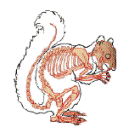
With the Oscars coming up tomorrow evening, this seems as good a time as any to list and rank my favorite films from 2007. One problem with trying to do so is that I only saw about twenty or twenty-five new films total, so inclusion on this list is not in itself a guarantee of top quality. On the other hand, with the exception of the number ten slot, I didn't have too many problems deciding what went on the list, and I didn't have to hold my nose too much.
10.
I’m Not There (dir. Todd Haynes). I thought it was a disaster overall, but the music was great, and Cate Blanchett's performance was superhumanly good--good enough that the film was able to edge out
Children of Men,
Cloverfield,
Gone Baby Gone,
Superbad,
Zodiac,
The Darjeeling Limited,
American Gangster, and
Michael Clayton, the only other possible contenders. OK,
Cloverfield and
Michael Clayton never had a chance.
9.
Grindhouse (dirs. Robert Rodriguez and Quentin Tarantino). Arguably, this is two movies, and Rodriguez'
Planet Terror wouldn't cut it on its own, but it's just enough fun as a double feature that it bumps Tarantino's
Death Proof up past what would probably otherwise be the number 12 or 13 spot.
8.
28 Weeks Later (dir. Juan Carlos Fresnadillo). Really not much more than your garden-variety, fast-paced, stone cold zombie movie with a depressing subtext of global hopelessness. I.e., a shoo-in.
7.
The Mist (dir. Frank Darabont). See above, but substitute creatures from another dimension for zombies. This movie pissed me off for days. I found myself having mental arguments with it and losing. It still pisses me off. How dare it end up on my list.
6.
Inland Empire (dir. David Lynch). Demanding, disjunctive, and dark (I mean literally, as in optically--I made the mistake of trying to watch it first in the daytime, and over half the time there was no way to get the room dark enough to make out anything on the TV screen). Careful out there: when I hear the word "self-indulgent" I reach for my existential rabbit sitcom.
5.
Eastern Promises (dir. David Cronenberg). Cronenberg at his most Hitchcockian--something about the way Naomi Watts zips around on that little scooter. I love the way Cronenberg goes out of his way at key moments to make it look like his budget was even lower than it actually was, especially when it comes to the wound makeup. I can't believe Viggo Mortensen got an Oscar nomination for this. He'll never win, but the mere fact that some Academy members even saw the film gives me a tiny scrap of faith in humanity.
4.
3:10 to Yuma (dir. James Mangold). I can't help it. Parts of it are terribly corny, and there's a little too much "production value" at times (Mangold somehow gets a shootout with nineteenth-century firearms to feel like a scene from
Die Hard), but this is good ol' western stuff.
3.
The Assassination of Jesse James by the Coward Robert Ford (dir. Andrew Dominik). Another western, but this one paced and plotted more like a Russian novel. Just a beautifully realized piece of cinema, with the best performance Brad Pitt has yet given.
2.
There Will Be Blood (dir. Paul Thomas Anderson). It was a close call between this and the number one film--I waffled several times. Daniel Day-Lewis is almost
too good: he threatens to implode into dark matter and generate a black hole that annihilates the rest of the film and the audience and theater and solar system with it (go ahead, laugh at me, you people who know how to use "dark matter" correctly in a sentence). The little imperfections, mostly revolving around Paul Dano's character, are at worst mildly distracting, and cannot seriously diminish the cumulative impact of the film. Perhaps the most damaging criticism that has been leveled against it is that it shies away from fully engaging the political content of Upton Sinclair's novel, but I see this as one of the film's most impressive accomplishments: what might have been didactic and heavy-handed emerges as a parable in which the personal and the political are packed tightly together into an enigmatic, rock-hard core of devastated values and visions.
1.
No Country for Old Men (dir. Joel and Ethan Coen). Another film that I found myself arguing with. I'm still not completely down with the "literariness" into which it lapses, or lurches, in its final moments. On balance, however, this is some of the most viscerally astounding moviemaking of the past couple of decades. That Josh Brolin didn't receive a Best Actor (or even Best Supporting Actor) nomination from the Academy is a disgrace.





































